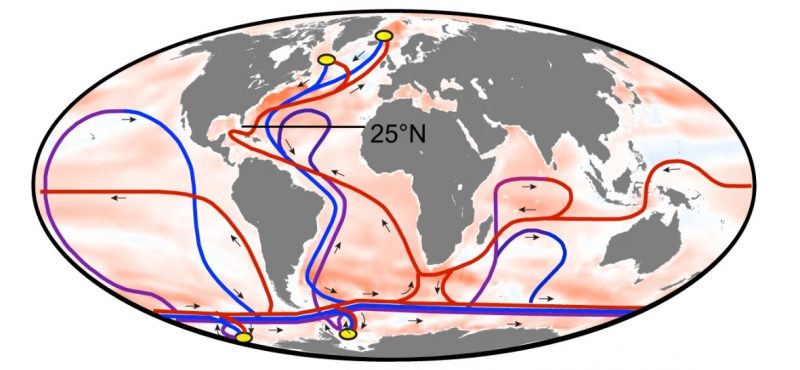
The deep ocean holds Earth’s warming
Earth’s oceans have absorbed about 90% of warming caused by humans. On May 17, 2022, scientists announced that much of the excess heat of our warming world gets stored deep in the subtropical North Atlantic Ocean. Marie-José Messias from the University of Exeter and Herlé Mercier from the University of Brest said that the deep ocean in the subtropical North Atlantic (around 25 degrees latitude North) holds 62% of the warming from 1850 to 2018. They estimate that the deep ocean will warm by a further 0.36° F (0.2° C) in the next 50 years.
The researchers published their study on May 17, 2022, in the peer-reviewed journal Communications Earth and Environment.
Consequences for a warming ocean
The researchers said that a warming ocean can have a range of consequences. These include a rising sea-level, changing ecosystems, currents and chemistry, and deoxygenation. Messias said:
As our planet warms, it’s vital to understand how the excess heat taken up by the ocean is redistributed in the ocean interior all the way from the surface to the bottom, and it is important to take into account the deep ocean to assess the growth of Earth’s “energy imbalance.” As well as finding that the deep ocean is holding much of this excess heat, our research shows how ocean currents redistribute heat to different regions. We found that this redistribution was a key driver of warming in the North Atlantic.
The motion of the ocean
Messias and Mercier studied the Atlantic Meridional Overturning Circulation (AMOC). AMOC is a system of ocean currents that acts like a conveyor belt. It carries warm water from the tropics into the North Atlantic. In the North Atlantic, colder, dense water sinks into the deep ocean and then spreads to the south.
What constitutes the “deep ocean?” The deep ocean is the water that’s 700 meters below the surface, or about a half mile down.
Heat from the Southern Hemisphere is warming the North Atlantic. The researchers said that it now accounts for about 1/4 of the excess heat in the deep ocean. For their study, they used temperature records and chemical “tracers.” Researchers can use the composition of these tracers to discover past changes in the ocean.

Bottom line: Earth’s oceans have absorbed about 90% of warming caused by humans. Researchers determined that much of the excess heat gets stored deep in the subtropical North Atlantic Ocean.











